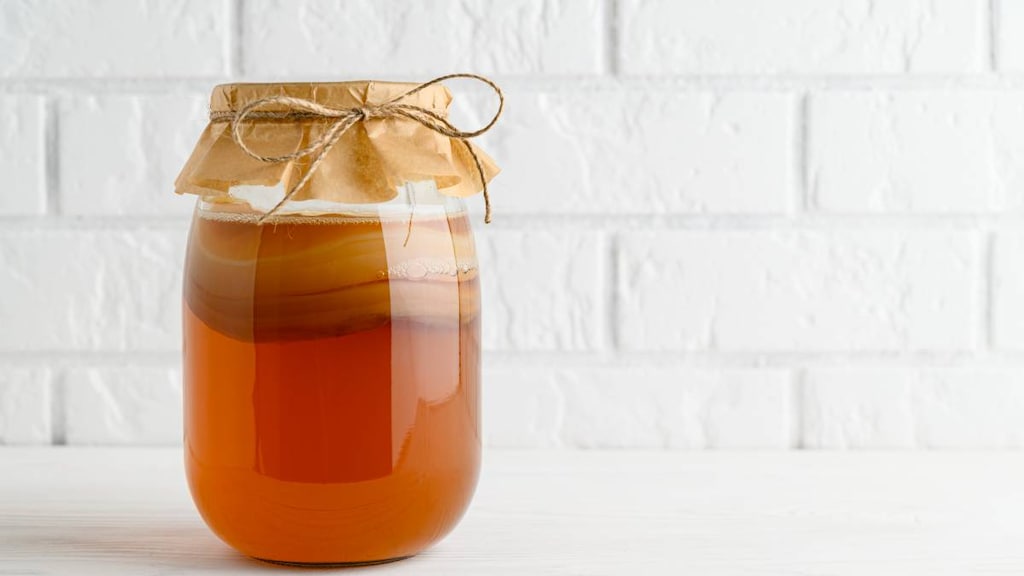Dosage Forms
Excipient information presented when available (limited, particularly for generics); consult specific product labeling. [DSC] = Discontinued product
Capsule, Oral:
Konsyl: 520 mg [DSC] [gluten free, sugar free]
Natural Fiber: 0.52 g [DSC]
Reguloid: 0.52 g [DSC] [contains fd&c yellow #6 aluminum lake]
Generic: 400 mg [DSC]
Capsule, Oral [preservative free]:
Reguloid: 400 mg [fish derivative free, gluten free, milk free, no artificial flavor(s), nut free, soy free, starch free, sugar free, yeast free]
Packet, Oral:
Konsyl: 60.3% (1 ea [DSC], 30 ea [DSC]) [gluten free, kosher certified, sugar free; contains aspartame, fd&c yellow #6 (sunset yellow); orange flavor]
Konsyl Daily Fiber: 28.3% (1 ea, 30 ea) [gluten free; contains fd&c yellow #10 (quinoline yellow), fd&c yellow #6 (sunset yellow); orange flavor]
Konsyl Daily Fiber: 100% (1 ea, 30 ea, 100 ea) [gluten free, kosher certified, sugar free; bland flavor]
Konsyl Daily Fiber: 60.3% (30 ea) [gluten free, sugar free; contains fd&c yellow #6 (sunset yellow)]
Metamucil: 28% (30 ea) [contains fd&c yellow #6 (sunset yellow); orange flavor]
Metamucil MultiHealth Fiber: 58.12% (30 ea) [gluten free, sugar free; contains aspartame, fd&c yellow #6 (sunset yellow); orange flavor]
Mucilin: 49% (30 ea [DSC]) [contains fd&c yellow #6 (sunset yellow), saccharin sodium, sodium benzoate]
Mucilin SF: 70% (30 ea [DSC]) [sugar free; contains aspartame, fd&c yellow #6 (sunset yellow)]
Powder, Oral:
Fiber Therapy: 58.6% (283 g [DSC]) [sugar free; contains aspartame, fd&c yellow #6 (sunset yellow)]
Geri-Mucil: 68% (368 g)
Geri-Mucil: 68% (368 g) [contains fd&c yellow #6 aluminum lake]
Geri-Mucil: 68% (283 g) [sugar free]
Geri-Mucil: 68% (283 g) [sugar free; contains aspartame, fd&c yellow #6 aluminum lake]
Konsyl: 30.9% (397 g) [gluten free, kosher certified; contains fd&c yellow #6 (sunset yellow); orange flavor]
Konsyl: 60.3% (450 g) [gluten free, kosher certified, sugar free; contains aspartame, fd&c yellow #6 (sunset yellow); orange flavor]
Konsyl: 71.67% (300 g) [gluten free, kosher certified, sugar free; bland flavor]
Konsyl: 60.3% (283 g) [sugar free; contains aspartame, fd&c yellow #6 (sunset yellow); orange flavor]
Konsyl Daily Fiber: 28.3% (538 g) [gluten free; contains fd&c yellow #10 (quinoline yellow), fd&c yellow #6 (sunset yellow); orange flavor]
Konsyl Daily Fiber: 100% (300 g, 450 g) [gluten free, kosher certified; bland flavor]
Konsyl Daily Fiber: 60.3% (450 g) [gluten free, sugar free; contains fd&c yellow #6 (sunset yellow)]
Konsyl Original Formula: 100% (402 g [DSC]) [gluten free, kosher certified]
Konsyl-D: 52.3% (397 g) [flavor free; sweet flavor]
Metamucil: 28.3% (575 g) [orange flavor]
Metamucil MultiHealth Fiber: 63% (660 g) [gluten free, sugar free]
Mucilin SF: 70% (400 g [DSC]) [sugar free; contains aspartame, fd&c yellow #6 (sunset yellow)]
Natural Fiber Therapy: 48.57% (368 g [DSC], 538 g)
Natural Fiber Therapy: 28.3% (368 g [DSC], 538 g) [contains fd&c yellow #6 (sunset yellow), fd&c yellow #6 aluminum lake]
Natural Psyllium Seed: 100% (480 g) [animal products free, gelatin free, gluten free, kosher certified, lactose free, no artificial color(s), no artificial flavor(s), starch free, sugar free, yeast free]
Natural Vegetable Fiber: 48.57% (368 g)
Reguloid: 48.57% (369 g, 540 g)
Reguloid: 28.3% (369 g, 540 g) [contains fd&c yellow #6 (sunset yellow), fd&c yellow #6 aluminum lake; orange flavor]
Reguloid: 58.6% (284 g, 426 g) [sugar free; natural flavor]
Reguloid: 58.6% (284 g, 426 g) [sugar free; contains aspartame, fd&c yellow #6 (sunset yellow), fd&c yellow #6 aluminum lake]
Sorbulax: 100% (420 g [DSC])
Powder, Oral [preservative free]:
Evac: (480 g) [dye free]
Pharmacology
Mechanism of Action
Psyllium is a soluble fiber. It absorbs water in the intestine to form a viscous liquid which promotes peristalsis and reduces transit time.
Pharmacokinetics/Pharmacodynamics
Absorption
None; small amounts of grain extracts present in the preparation have been reportedly absorbed following colonic hydrolysis
Onset of Action
Relief of constipation: 12-72 hours
Use: Labeled Indications
Constipation: Treatment of occasional constipation
Reduce risk of coronary heart disease: To reduce risk of coronary heart disease (CHD)
Dietary fiber supplement: Use as a dietary fiber supplement
Use: Off Label
Diabetes mellitus, type 2 (adjunctive therapy)b
Data from blinded and non-blinded randomized, placebo-controlled trials and from a meta-analysis suggest that psyllium may be effective in reducing fasting blood glucose and glycated hemoglobin (HbA1c) in patients at risk for or with type 2 diabetes Abutair 2016, Feinglos 2013, Gibb 2015. Additional trials may be necessary to further define the role of psyllium in this condition.
Irritable bowel syndromebyes
According to the American College of Gastroenterology 2014 Guidelines for Management of Irritable Bowel Syndrome and Chronic Idiopathic Constipation, psyllium is effective in providing overall symptom relief in patients with irritable bowel syndrome ACG [Ford 2014]. Data from a randomized, placebo controlled trial, suggests that regular use of psyllium is beneficial in providing relief of symptoms and significant reduction in severity of symptoms of irritable bowel syndrome Bijkerk 2009.
Contraindications
Hypersensitivity to psyllium or any component of the formulation; fecal impaction; GI obstruction
Dosage and Administration
Dosing: Adult
General dosing guidelines; consult specific product labeling; however, the dose of psyllium should be gradually increased to effect along with dietary intake changes.
Constipation: Oral: Psyllium: 2.5 to 30 g per day in divided doses
Reduce risk of CHD: Oral: Soluble fiber ≥7 g (psyllium seed husk ≥10.2 g) per day (DHHS 1998)
Diabetes mellitus, type 2 (adjunctive therapy) (off-label use): Oral: 6.8 to 13.6 g/day in 2 divided doses (Abutair 2016; Feinglos 2013)
Irritable bowel syndrome (off-label use): Oral: 10 g/day in 1 or 2 divided doses (ACG [Ford 2014]; Bijkerk 2009).
Dosing: Geriatric
Refer to adult dosing.
Dosing: Pediatric
Adequate intake for total fiber: Oral: Note: The definition of “fiber” varies; however, the soluble fiber in psyllium is only one type of fiber which makes up the daily recommended intake of total fiber; contribution from other food sources should also be considered when assessing intake. Reported requirements variable:
AAP/NHLBI recommendation (NHLBI 2011): Minimum intake: Children 2 to 10 years: Daily dietary intake (g/day) = Age (years) + 5 g
IOM recommendation:
Children 1 to 3 years: 19 g/day
Children 4 to 8 years: 25 g/day
Children and Adolescents 9 to 13 years: Male: 31 g/day; Female: 26 g/day
Adolescents: 14 to 18 years: Male: 38 g/day; Female: 26 g/day
Bowel movement regularity: Oral: Note: General dosing guidelines (Federal Register 1985); consult specific product labeling.
Children 6 to <12 years: 1.25 to 15 g/day in 1 to 3 divided doses
Children ≥12 years and Adolescents: 2.5 to 30 g/day in 1 to 3 divided doses
Hypercholesterolemia; adjunct treatment with dietary management (NHLBI 2011): Oral:
Children 2 to <12 years: 6 g/day in 1 to 3 divided doses
Children ≥12 years and Adolescents: 12 g/day in 1 to 3 divided doses
Administration
Inhalation of psyllium dust may cause sensitivity to psyllium (eg, runny nose, watery eyes, wheezing). Drink at least 8 ounces of liquid with each dose. Powder must be mixed in a glass of water or juice. Capsules should be swallowed one at a time. When more than one dose is required, they should be divided throughout the day. Separate dose by at least 2 hours from other drug therapies.
Diabetes mellitus, type 2 (adjunctive therapy) (off-label use): Administer just prior to meals (Abutair 2016; Feinglos 2013).
Irritable bowel syndrome (off-label use): Administer with meals by mixing with food, preferably yogurt (Bijkerk 2009).
Dietary Considerations
Products should be taken with at least 8 ounces of fluids. Some products may contain phenylalanine, potassium, sodium, as well as additional ingredients. Check individual product information for caloric and nutritional value.
When used to reduce the risk of CHD, the amount of soluble fiber from psyllium should be ≥7 g/day and it should be used in conjunction with a diet low in saturated fat and cholesterol.
Adequate intake for total fiber: Note: The definition of “fiber” varies; however, the soluble fiber in psyllium is only one type of fiber which makes up the daily recommended intake of total fiber.
1 to 3 years: 19 g/day
4 to 8 years: 25 g/day
9 to 13 years: Males: 31 g/day; Females: 26 g/day
14 to 18 years: Males: 38 g/day; Females: 26 g/day
19 to 50 years: Males: 38 g/day; Females: 25 g/day
≥51 years: Males: 30 g/day; Females: 21 g/day
Pregnancy: 28 g/day
Lactation: 29 g/day
Storage
Store at room temperature; protect from moisture (consult product labeling for specific information).
Drug Interactions
There are no known significant interactions.
Adverse Reactions
Frequency not defined.
Gastrointestinal: Abdominal cramps, constipation, diarrhea, esophageal obstruction, intestinal obstruction
Hypersensitivity: Anaphylaxis (upon inhalation in susceptible individuals)
Ophthalmic: Allergic conjunctivitis (rhinoconjunctivitis)
Respiratory: Bronchospasm
Warnings/Precautions
Concerns related to adverse effects:
- Hypersensitivity reactions: Hypersensitivity reactions have been reported with ingestion or inhalation of psyllium in susceptible individuals.
Disease-related concerns:
- Coronary heart disease (CHD): To reduce the risk of CHD, the soluble fiber from psyllium should be used in conjunction with a diet low in saturated fat and cholesterol.
- Gastrointestinal disease: Use with caution in patients with esophageal strictures, ulcers, stenosis, or intestinal adhesions or difficulty swallowing
Special populations:
- Elderly: Use with caution in the elderly; may have insufficient fluid intake which may predispose them to fecal impaction and bowel obstruction.
Dosage form specific issues:
- Calcium: Some products may contain calcium.
- Phenylalanine: Some products may contain phenylalanine.
- Potassium: Some products may contain potassium.
- Sodium: Some products may contain sodium.
- Soy lecithin: Some products may contain soy lecithin.
Other warnings/precautions:
- Administration: Products must be taken with at least 8 ounces of fluid in order to prevent choking.
- Self-medication (OTC use): When used for self-medication (OTC), do not use in the presence of abdominal pain, nausea, or vomiting. Notify healthcare provider in case of sudden changes of bowel habits which last >2 weeks or in case of rectal bleeding. Not for self-treatment of constipation lasting >1 week.
Pregnancy
Pregnancy Considerations
Psyllium is not absorbed systemically. When administered with adequate fluids, use is considered safe for the treatment of occasional constipation during pregnancy (Wald, 2003).
Patient Education
What is this drug used for?
- It is used to treat constipation.
- It is used to raise fiber in the diet.
- It may be given to you for other reasons. Talk with the doctor.
Frequently reported side effects of this drug
- Bloating
- Abdominal pain
- Abdominal cramps
Other side effects of this drug: Talk with your doctor right away if you have any of these signs of:
- Chest pain
- Difficulty swallowing
- Vomiting
- Difficulty breathing
- Signs of a significant reaction like wheezing; chest tightness; fever; itching; bad cough; blue skin color; seizures; or swelling of face, lips, tongue, or throat.
Note: This is not a comprehensive list of all side effects. Talk to your doctor if you have questions.
Consumer Information Use and Disclaimer: This information should not be used to decide whether or not to take this medicine or any other medicine. Only the healthcare provider has the knowledge and training to decide which medicines are right for a specific patient. This information does not endorse any medicine as safe, effective, or approved for treating any patient or health condition. This is only a brief summary of general information about this medicine. It does NOT include all information about the possible uses, directions, warnings, precautions, interactions, adverse effects, or risks that may apply to this medicine. This information is not specific medical advice and does not replace information you receive from the healthcare provider. You must talk with the healthcare provider for complete information about the risks and benefits of using this medicine.



